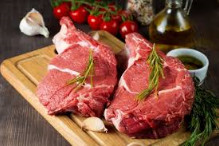Understanding What Makes Food Kosher involves navigating a detailed set of Jewish dietary laws. Kosher, meaning “fit” or “proper” in Hebrew, refers to food that adheres to these regulations, making it permissible for consumption by observant Jews. However, the appeal of kosher food extends far beyond the Jewish community. Many consumers seek out kosher products for reasons of quality, health, and ethical considerations. But at its core, the kosher status of food is determined by a meticulous process involving ingredient sourcing, preparation methods, and supervision.
Key Aspects of Kosher Food
1. Kosher for Passover
During Passover, the dietary laws become even more stringent. “Kosher for Passover” signifies food that not only meets general kosher standards but also is free from chametz. Chametz refers to grains like wheat, barley, rye, oats, and spelt that have been allowed to rise or ferment. This means many common foods are off-limits during Passover. Instead, foods made from matzah (unleavened bread) and other permissible ingredients are consumed. This distinction ensures that Passover foods commemorate the Exodus from Egypt in accordance with Jewish tradition.
2. Glatt Kosher Meat
The term “Glatt” enhances the kosher standards for meat. While all kosher meat must come from animals slaughtered and prepared according to specific laws, “Glatt Kosher” refers specifically to the lungs of the animal. “Glatt” in Yiddish means “smooth,” and it indicates that the lungs are free from adhesions. These adhesions, or lesions, could potentially render the animal non-kosher according to some interpretations of Jewish law. Therefore, Glatt Kosher meat is considered to be of a higher standard of kashrut (kosher status), particularly within stricter Orthodox communities.
3. Pareve (Neutral)
A fundamental principle of kosher law is the separation of meat and dairy. To facilitate this separation, the category of “Pareve” exists. Pareve foods are neutral, meaning they contain neither meat nor dairy ingredients. This category includes fruits, vegetables, grains, eggs, fish, and kosher-certified oils and fats. Pareve foods are incredibly versatile as they can be eaten with either meat or dairy meals, simplifying meal preparation and ensuring adherence to kosher dietary laws regarding mixing meat and milk.
4. Kosher Certification (Hechsher)
To assure consumers that a product is genuinely kosher, a “Hechsher” is used. A Hechsher is a symbol or stamp placed on food packaging indicating that a rabbinical authority has certified the product as kosher. This certification process involves a detailed inspection of the ingredients, the production process, and the equipment used to ensure compliance with kosher laws. Different Hechsher symbols exist, representing various certifying agencies and their specific standards, providing consumers with confidence in the kosher status of the food they are purchasing.
5. The Role of the Mashgiach
The “Mashgiach” plays a crucial role in maintaining kosher standards, especially in commercial food production. A Mashgiach is a trained kosher supervisor who oversees the food production process to ensure that all kosher regulations are meticulously followed. Their responsibilities include verifying the kosher status of ingredients, ensuring the separation of meat and dairy equipment, and confirming that cooking and baking processes adhere to kosher guidelines. The presence of a Mashgiach is often a requirement for a product to receive kosher certification, adding an extra layer of assurance for kosher consumers.
6. Cholov Yisroel (Jewish Milk)
“Cholov Yisroel,” meaning “Jewish milk,” represents a higher level of kosher observance within dairy. According to this standard, dairy products must derive from milk that has been milked under the direct supervision of an observant Jew. This ensures that only milk from kosher animals is used and that there is no mixing with non-kosher milk. While all milk in many Western countries is presumed to be from cows (a kosher animal), Cholov Yisroel provides an added level of stringency, particularly important for those who adhere to stricter kosher practices.
7. Pas Yisroel (Jewish Bread/Grain)
Similar to Cholov Yisroel for dairy, “Pas Yisroel,” meaning “Jewish bread,” applies to grain products, particularly baked goods. Pas Yisroel requires that an observant Jew must participate in some aspect of the cooking or baking process, often by lighting the oven or adding wood to the fire. This requirement stems from historical and halachic (Jewish legal) considerations. For many observant Jews, especially outside of Israel, Pas Yisroel is a preferred standard for bread and grain-based products.
8. Yoshon and Chodosh (Old and New Grains)
The concepts of “Yoshon” (old) and “Chodosh” (new) relate to the consumption of grains and their harvest cycles. “Yoshon” grains are those that took root before the previous Passover. According to some interpretations of Jewish law, only Yoshon grains can be consumed from the new harvest until the following Passover. “Chodosh” refers to new grains from the spring crop harvested after Passover, which are forbidden until the next year. This distinction impacts the timing of grain consumption based on harvest cycles and adherence to specific agricultural laws within kashrut.
9. Mevushal Wine
“Mevushal” wine is a category of kosher wine that has been heated to a high temperature, essentially pasteurized. The Mevushal process has significant implications under kosher law. Un-Mevushal kosher wine can only be handled and poured by Sabbath-observant Jews to maintain its kosher status in certain ritual contexts. However, Mevushal wine, after being heated, can be handled by anyone without affecting its kosher status. This makes Mevushal wine a practical choice for events where non-Jewish individuals may be involved in serving.


